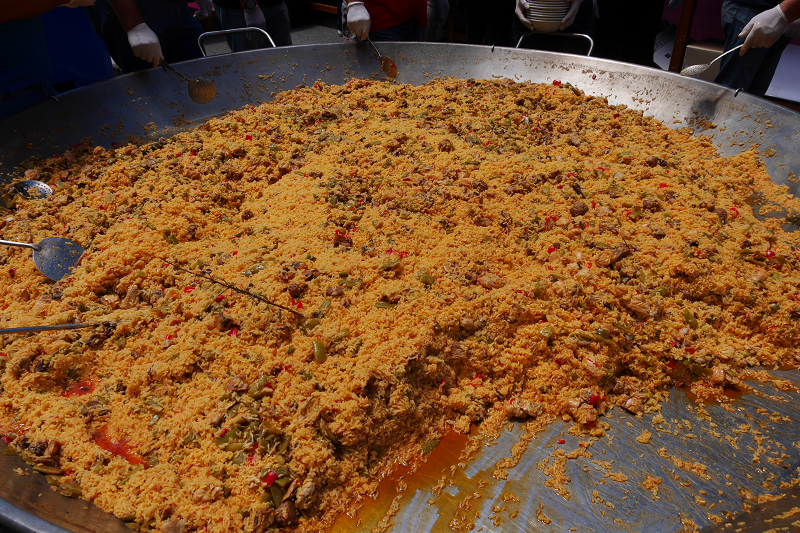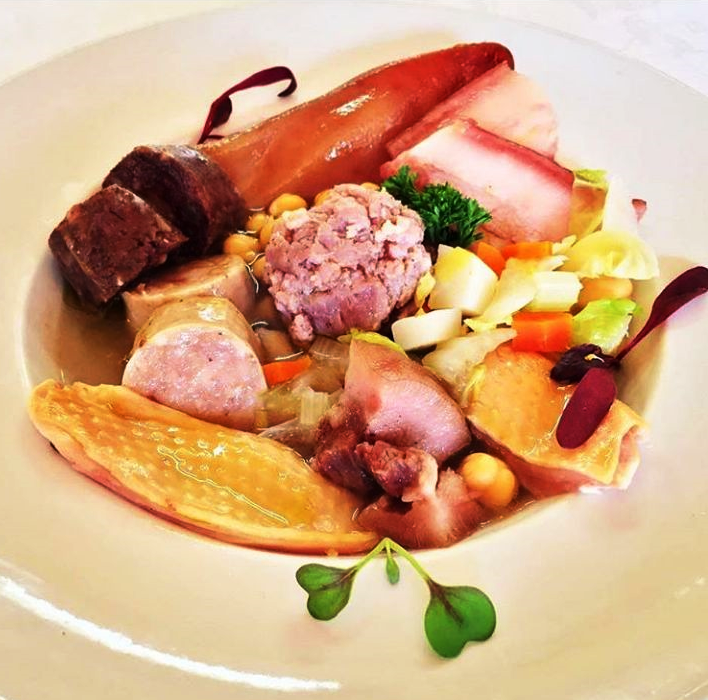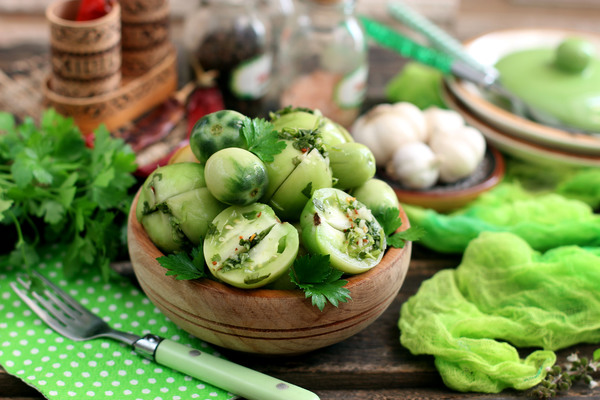The gastronomy of Spain covers the set of foods and preparations, culinary philosophy and grammar, drinks, customs and everything related to the culture of food and drink. For Spain, as in France, Italy and other European states, what historically exists is a set of independent local or regional cuisines, which may be, more or less, related to each other and to others from neighboring countries.
In general terms, they are seasonal cuisines that favor high-quality seasonal products cooked simply and without too many spices or sauces and even less dairy products. Thus, the basic ingredients change throughout the seasons, as well as the type of preparations, mainly soups and stews in the winter and salads and grilled products in the summer. Most recipes are very open-ended; the amount of each ingredient is variable according to family recipes and tastes, and many can be interchanged with others. The same preparation can often be made with few or many ingredients, more or less rich, depending on the occasion, personal or local preferences and the availability of raw materials.
Extremely simple homemade dishes, such as a sandwich or a salad, are usually preferred to industrial preparations and preserves, even if they are more elaborate and sophisticated. The most typical dishes are, among others, egg omelette and potato and onion omelette, moruno pintxos, ham, sausage and cheese, various legume-based preparations, Russian salad and Cuban rice.
In countries outside of Spain, the notion of Spanish cuisine is sometimes confusing. The best-known product is often chorizo, which makes any preparation containing this ingredient called Spanish, even if it is not made anywhere in Spain and even involves combinations that may be surprising to the Spanish, like chorizo with mussels or monkfish. Within this logic, in the imagination of many people, it is an indispensable ingredient in the most well-known “Spanish” dish: paella. Most countries use this as a regional dish of reference and that it has been a traditional dish throughout Spain for centuries and that each autonomous community has a different paella.
For some entities, Spanish cuisine is the juxtaposition of each of the different cuisines that exist in the State. Others consider them the dishes, drinks, customs and traditions common to the whole territory. Despite their differences, the cuisines of the different areas have a fairly common basis, of ingredients and combinations, often also common with other cuisines of the Mediterranean or in Europe. Widespread preparations are, for example, panadas, fried fish, stir-fry or rice pudding. A not very different cultural base means that very simple preparations can be common in many places; for example, egg omelettes, fried potatoes, breads with oil or fruit salads. There are also initially local dishes and desserts, such as paella, gazpacho, Catalan cream or Santiago cake, which have become well-known throughout the State.
But common history, especially in the 20th century, has meant that some dishes are genuinely made – or at least known – throughout Spain, especially from the appearance of television and figures such as Karlos Arguiñano; for example, arros a the Cuban one, the potato omelette (also present in Occitania and Portugal), the Moorish pintxitos or the Russian salad. In the 21st century, internet blogs and forums made it possible for local homemade preparations become known to others, as well as to devise with the collaboration of people from other places variations of dishes acquaintances. Despite speaking the same language, Spaniards do not usually share or mix their way of cooking with that of other Spanish-speaking Americans or non-Europeans.
Main ingredients
Meat: pork, rabbit, chicken, turkey. Also beef and lamb, less often.
Fish: hake, tuna, cod, sardine
Seafood: prawn, mussel, scallop, clam, squid, cuttlefish
Vegetables: potato, onion, spinach, bean, Swiss chard, cabbage, leek
Vegetables: tomato, cucumber, carrot, courgette, aubergine
Fat used for cooking: olive oil
Fruit: orange, tangerine, apple, pear, plum, grape, peach, apricot, strawberry, cherry, watermelon, melon
Spices and seasonings: salt, black pepper, garlic, parsley, red pepper
Others: ham, sausage, cheese, egg, legumes, bread, wine
Dishes
Traditionally a meal consists of a first course, a second course and a dessert, which is usually fresh fruit. It is also very common to eat only one single dish and fruit. The first course can include a chicken broth with pasta, a salad with lettuce and vegetables, a puree of vegetables (spinach, zucchini, etc.) or boiled vegetables (beans, peas, spinach) with potato, macaroni with stir-fry and minced meat (or a stew with or without potato), vegetables, legumes (lentils, chickpeas, beans, fava beans), which may have pasta (noodles) and sometimes sausage, cod or meat.
The second course usually includes an animal protein accompanied by cooked or fresh vegetables (salad). An example is an egg omelette, without or without potatoes (it can also have other ingredients depending on the regions). Fried eggs are very popular. It can also be meat, often pork, or chicken or turkey, thinly sliced and grilled or fried, breaded or not. Loins (e.g., pork loin stuffed with cheese and ham, breaded and fried) is a well-known dish, as are meatballs and hamburgers. Fish is mainly fried or grilled and may be accompanied by mayonnaise sauce. Seafood is also eaten fried (cephalopods, crustaceans), boiled or steamed (e.g., crustaceans, mussels, cockles) and is often not eaten alone but integrated into a fish dish.
Combined dishes are a restaurant formula that consists of a cut of meat or fish often fried and accompanied by various things, such as breaded bread , croquettes, fried potatoes, fried bacon, calamari a la Romana or salad. Sandwiches of sausage, cheese, omelette, meat or fish on bread are very popular, cheap and quick to make.
Sweets
Sweets are usually considered treats or eaten for dessert, after fruit, on special occasions. Among the sweets are roasted almonds and industrial candies, such as sugus (square soft caramel), palotes (strawberry soft caramel, stick-shaped), chupa-chups (spherical stick-shaped caramel) or conguitos (peanut surrounded by chocolate). Another highly appreciated and well-known industrial preparation is nocilla, the commercial name of a cocoa and hazelnut spread, and also cola cao, or cocoa powder.
For many people, some pastries are common at breakfast or as a snack, as an alternative to a sandwich; among the most well-known are “maria” cookies (also in Portugal), muffins, croissants (all over Europe), ensaïmades (from Mallorca), puff pastry glasses or palms and donuts (industrial origin, from a Catalan company). Pastries and cakes can be filled with cream, angel hair jam, cream, cream with cocoa (truffle) or filled or covered with chocolate.
A good part of sweets and treats in Spain come from customs and traditions related to religious holidays, sometimes also common with those of other neighboring towns, such as the roste de Santa Teresa and the tortell de reis. Many, however, are made and eaten locally.
Some sweets had been traditional only in one area but have ended up spreading throughout the State: this is the case of ensaimades (from Majorca), ice cream cake with whiskey (from Menorca), nougat (Països Catalans), polvorons (Andalusia and Castile – La Mancha), churros or Catalan cream.
Other sweets that exist in Portugal, Occitania, Italy, etc. are quince, fritters, egg white and almond biscuits (almonds), egg white and grated and coconut balls (or melindros). Gypsy arm is also eaten in Portugal, France, Italy, etc. Rice pudding is eaten in Spain and throughout the Mediterranean. In Portugal, Italy and other neighboring countries, sweet creams and spoon desserts are very popular, whether in the form of pudding, custard, liquid cream (custard, crema catalana) or cream gelada (ice cream). Around the 80s, a kind of “combined dessert,” with custard and cream, called pajamas, became very fashionable in restaurants.
Drinks
Wine is the most traditional drink, but beer is also very popular. They can be washed down with carbonated water or a soft drink, as is the case with tinto de verano, clara (beer with lemonade or sparkling water, depending on the area) or even calimotxo (wine with cola soda). Sangria is well known internationally. Cava from Catalonia is drunk all over Spain.
Among non-alcoholic beverages, coffee is generally more popular than tea and is most often drunk with milk. It can also be drunk alone, with ice, with liqueur or with condensed milk. Other common drinks are lemonade, orange juice, slush, melted chocolate or milk with cocoa.
There are many liqueurs and other types of local drinks, some of which are well known throughout the State and sometimes outside of it; e.g., horchata, meringue milk or sherry.
Spanish chefs
The majority of the most recognized chefs in Spain are Catalan or Basque and prepare Basque and Catalan cuisine. The best known internationally is Ferran Adrià, while Juan María Arzak (San Sebastian), Martín Berasategui (Lasarte-Oria), Carme Ruscalleda (Sant Pol de Mar), Pedro Subijana (San Sebastian) and Joan Roca and Fontané (Girona) each have three Michelin stars. From 1994 until his death in 2011, Santi Santamaria (Sant Celoni) also had Michelin stars, and his restaurant still has them today.
Some chefs are well known throughout Spain for programs they make for television channels broadcast throughout the State, such as the Basque Karlos Arguiñano and his sister Eva, the Asturian José Andrés, the Catalan Sergi Arola and the Basque Bruno Oteiza. One of the first national cooking programs was Con las manos en la masa, presented by the Madrid actress Elena Santonja.
A good part of gourmets are Catalan. In general, the gastronomes who write about cuisine in Spain do so about their own, for example, that of the Catalan Countries, Manxega or Galicia. Among the most prominent are the Galician Álvaro Cunqueiro and the Catalans Josep Pla, Manuel Vázquez Montalbán, Nèstor Luján and Jaume Fàbrega.
See also Catalan cuisine
See also Andorra cuisine











